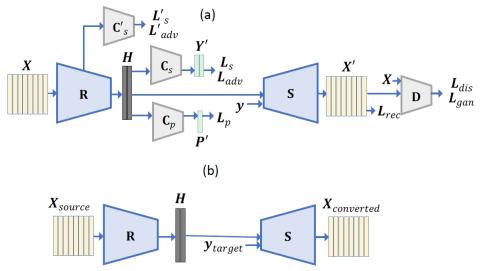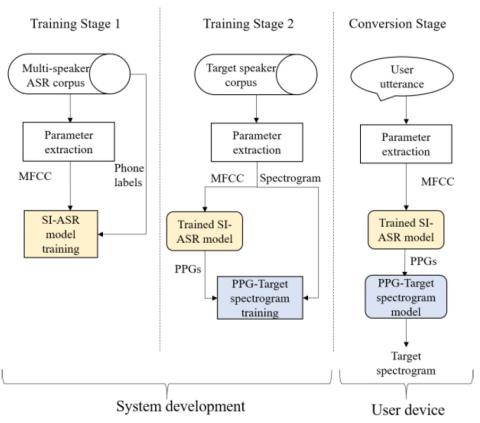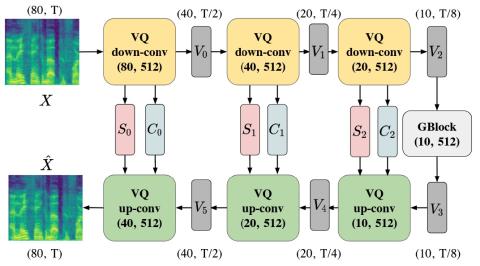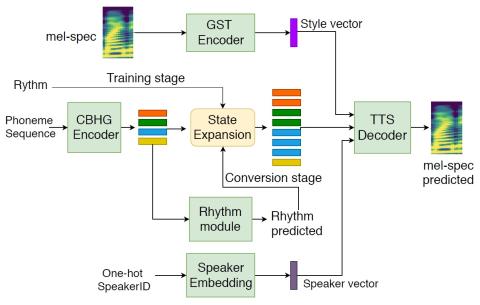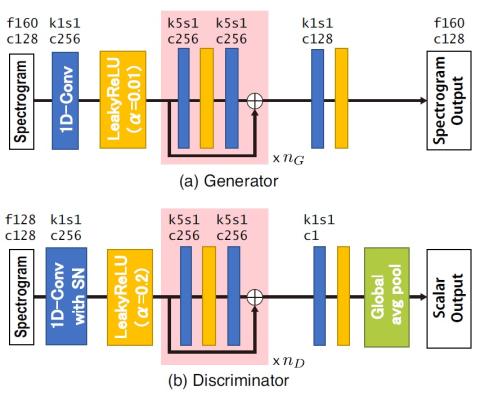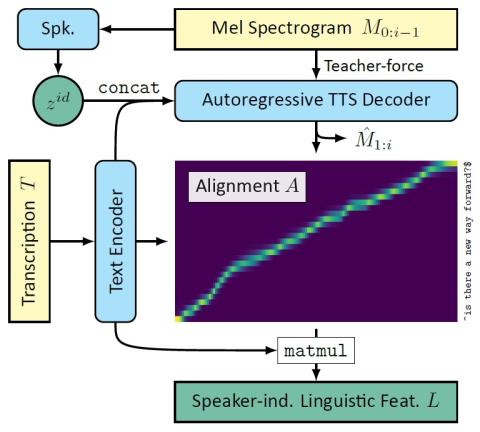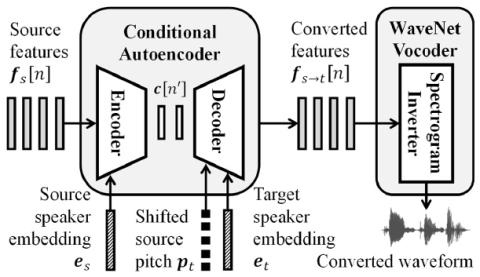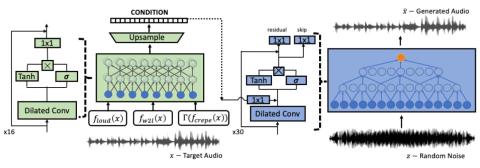
Unsupervised Cross-Domain Singing Voice Conversion
We present a wav-to-wav generative model for the task of singing voice conversion from any identity. Our method utilizes both an acoustic model, trained for the task of automatic speech recognition, together with melody extracted features to drive a waveform-based generator. The proposed generative architecture is invariant to the speaker's identity and can be trained to generate target singers from unlabeled training data, using either speech or singing sources. The model is optimized in an end-to-end fashion without any manual supervision, such as lyrics, musical notes or parallel samples. T...

